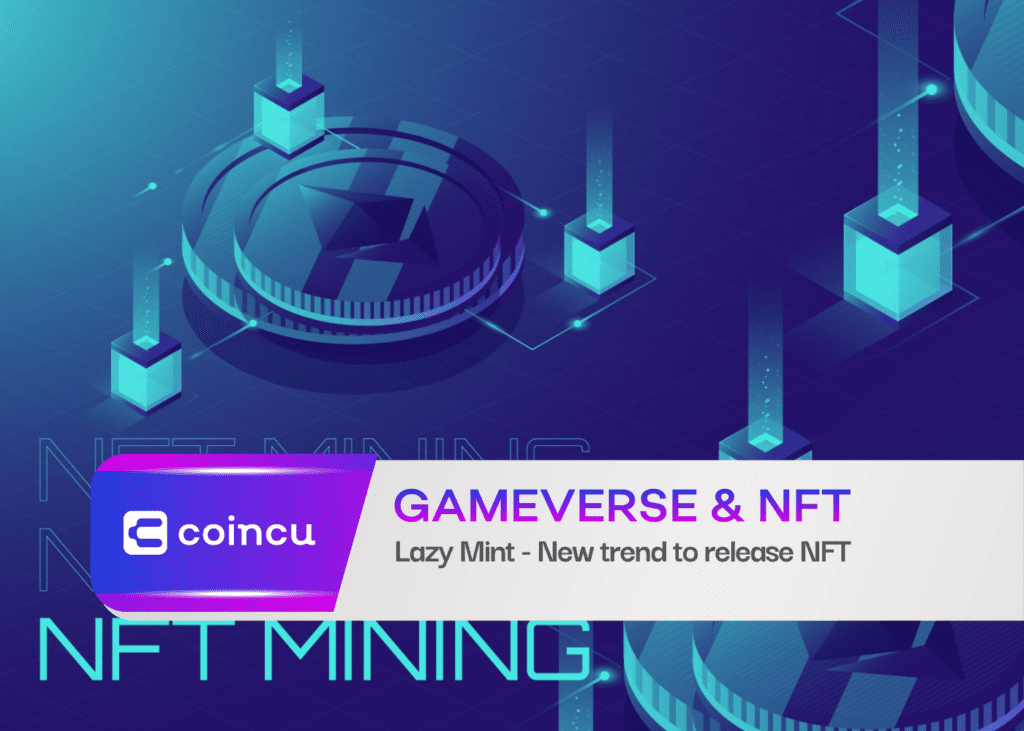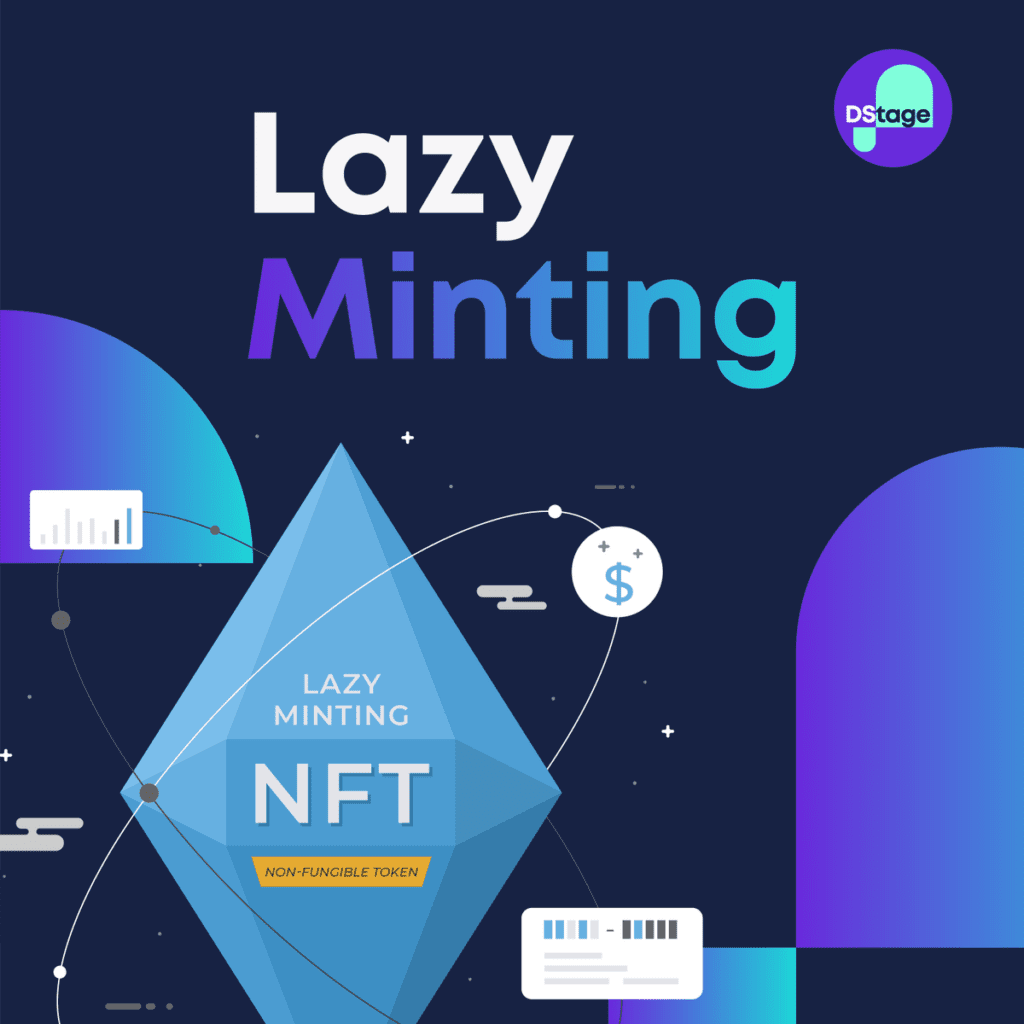Lazy Mint is the name that is hot recently in the nft field. To create an NFT, creative artists in addition to creating works must also understand the operations of NFT initialization. Initialization of 1 NFT can be affected by high gas fees. Ethereum 2.0, an upgrade to Ethereum that has yet to be implemented to reduce the cost of transactions, makes NFT minting still a costly operation.
These difficulties do not reduce the need for NFT, but it is also a driving force behind developers who have come up with many solutions to reduce the cost of launching NFT, such as smart contracts that allow minting goods series ERC-721A. A solution that is quite successful and widely applied by major NFT marketplaces today is Lazy Mint. So what is Lazy Mint? Let’s find out through this article.
How is NFT minted?
Today’s NFTs are mostly a Non-Fungible token that contains information about a digital file. The information about this file is stored on a decentralized database so it cannot be modified. The process of uploading information and assigning it to a token is called mint.
Steps for minting:
- To mint NFT, of course, a smart contract is needed. However, nowadays, protocols are quite popular so that anyone can interact with these contracts through friendly interfaces.
- Users need to pay a gas fee to write information to blocks, generating NFTs.
These NFTs can then be sold on marketplaces like Rarible or OpenSea.
What is Lazy Mint?
Lazy Mint allows NFT creators to delegate the ability to mint NFTs to the following users. These authorization signatures are generated at no cost and ensure no NFTs are generated without prior approval.
A simpler description, Lazy Mint is an off-chain NFT minting and is only actually minted when a purchase occurs. NFT creators will not have to pay the gas fee to mint the NFT first, but only after the NFT is purchased by the user.
How is Lazy Mint different from regular Mint?
If comparing NFT minting is like printing a shirt in real life, lazy mint is like the creator just designing the shirt, whenever someone buys that shirt, it will be printed to distribute to buyers. A part of the purchase of the shirt will be paid to the printer, the creator keeps the rest of the revenue. With conventional minting, the creator will pay the printer the cost to print a certain number of shirts, and will have to sell that amount of available shirts to the buyer to make a profit.
Pros and cons of Lazy Mint
Some of the benefits of Lazy Mint are:
- Reduce the impact of gas fees: By passing on gas payments to the buyer, high gas fees will no longer be an obstacle for new artists getting started with the release of the NFT collection.
- Lower barriers to entry: when gas fees are no longer an obstacle, this will encourage artists to try out NFT publishing as a new distribution channel for their work.
Disadvantages of Lazy Mint:
- Loss of control: If Lazy mint is used, when the NFTs are officially minted, or who will be able to mint those NFTs, will no longer be under the control of the artist. This can be improved in the future with new features.
Instructions for minting NFT on Rarible
Many marketplaces are now offering Lazy Mint methods, namely OpenSea or Rarible.
Here’s a guide to Lazy Mint on Rarible:
- Connect your ETH wallet to the Rarible protocol.
- Create an NFT by clicking Create.
- Select blockchain to mint NFT.
- Select the number of NFTs you want to mint (Single or Multiple).
- Then upload the file you want to convert to NFT and fill in the basic information. Remember to choose Free Mint (Lazy Mint) so there is no mint fee.
- Sign the tx (no charge) to confirm.
You are done creating the NFTs for your works. The rest is marketing to get people to buy it. When someone accepts to buy these NFTs, a fee will be used to mint the NFT on-chain for transfer to the buyer.
Verdict
Lazy Mint is a high-impact technique that removes barriers to NFT creativity and experimentation. Feel free to use it to build something innovative in the crypto space.
If you have any questions, comments, suggestions, or ideas about the project, please email ventures@coincu.com.
DISCLAIMER: The Information on this website is provided as general market commentary, and does not constitute investment advice. We encourage you to do your own research before investing.
Ares
Coincu Ventures






